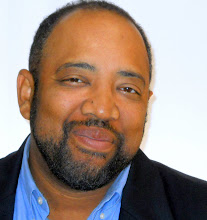For days after this NY Times article came out on
PR in the world of Web 2.0 , many in the PR world were still buzzing about it. It was an frontal assault on the way that business is done. I won't rehash everything that's been said about the article. There's no point in that, and too many others have trampled that ground. I want to look at what PR people aren't saying about the article. (If you want to read other commentaries about the NY Times piece, skip to end of this blog for a suggested reading list.)
Why did that article touch a raw nerve in the PR community?
PR practitioners have always felt that people outside of the marketing communications tent don't understand what we do. And they don't. It's almost impossible to explain to a civilian how PR works to shape and place stories.
For the most part, most everyone carries the common misconception that PR is about spin control, but those in the club know that unless you represent a market mover, it's not about spin, it's about getting attention. As my friend
Tony Mackey put it in his blog, not every company is a winner, but that doesn't mean they don't think they deserve press coverage. They are certainly paying for it.
And therein lies the tension, or the dirty little secret PR folks want to hide. You can't lie, that ruins relationships and relationships are hard currency this trade. The Times got that one right. But sometimes you have to push a reporter to write about the slowest horse in the race and make the reporter believe that horse has a chance of winning the race. In the real world, people might call this lying. In PR it's called shading, spinning or positioning.
Reporters get this, and that's why they distrust PR folks. It's a healthy cynicism they have and, to be fair, one they should have and one we deserve.
Like any industry, there are people who don't do PR well, and that gives PR its well-earned black mark. And, well, in addition to the incompetents, there are the liars. Whether we want to admit or not that they exist in this industry, to not acknowledge that is to invite further distrust.
Now, enter the rise of influential blogs and other social media tools, which have slowly but steadily risen to prominence in the past two years, neatly coinciding with the print media's steady march to bankruptcy.
A scant two years ago when print was king, reporters and PR people were reading the same rulebook. They weren't exactly adversaries, because as much as reporters like to decry the work of PR people, we provide a source of information they cannot get elsewhere. True, that information comes with a price, the price of coverage, but show me a free lunch and I'll show you an overly long line at the buffet.
PR people are scared. The rules of the game are changing. Change may be good, but it's not always welcome. A lack of understanding the rules leads to anxiety, and that turns into sleepless nights.
When the Times points out that PR is at a crossroads, it makes our clients question how we do our jobs. There is a conceit among bloggers, reporters and corporate executives that anyone can do PR. It's true, anyone can do it, but not everyone does it well.
In her book about her experience as a speechwriter for the Great Communicator Ronald Reagan, Peggy Noonan noted that while everyone can write, not everyone can write well. PR is a lot like that, and the rise of social media has made it easier for unskilled PR people to do a bad job.
True, the rise of social media has changed the tools and the rules. In some cases, it has made reporters irrelevant and in other instances, it has made PR people into Web copy editors. It's also made everyone confused. When the rulebook gets rewritten in the middle of the game, it puts everyone on edge. It also leads to land grabs, and the articles below are the influencers staking out their territory.
As promised, if you want to read some solid commentary on the flap, see below.
I have only included some of the pieces that received the most commentary, but I welcome other contributions and suggestions for articles to read.



